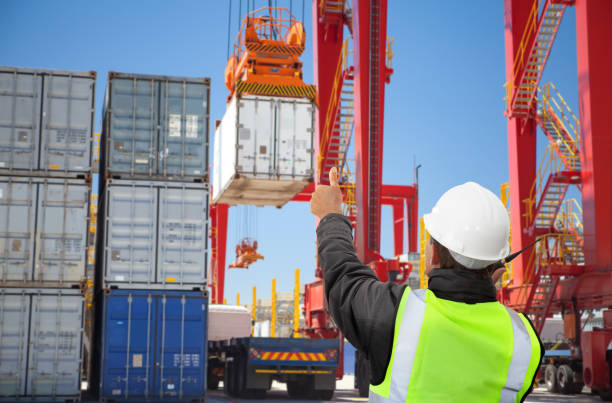The China-US trade corridor remains one of the world’s busiest shipping routes, with bilateral trade reaching $690 billion in 2025 according to the US Census Bureau. Professional freight forwarding services streamline complex logistics, reduce shipping costs by up to 30%, and ensure compliance with both countries’ regulations. Are you maximizing efficiency in your cross-Pacific supply chain? Expert Freight Forwarder from China to USA solutions help businesses navigate documentation, customs clearance, and optimize delivery timelines for technology imports.
Breaking Down Shipping Costs: Air vs Sea Freight Options
Key Criteria for Choosing a Reliable Freight Forwarder from China to the USA
Selecting the right freight forwarder can make or break your international shipping operations. With countless options available, distinguishing reliable partners from mediocre providers requires careful evaluation of specific criteria.
Also to discover : How Is Remote Work Transforming the UK Tech Industry?
The most successful businesses focus on these essential factors when choosing their freight forwarding partner:
- Valid licensing and certifications including FMC registration, IATA accreditation, and NVOCC status for comprehensive shipping authority
- Established network of verified partners across major Chinese ports (Shanghai, Shenzhen, Ningbo) and US gateways (Los Angeles, Long Beach, New York)
- Industry expertise in your specific sector, particularly for technology products requiring specialized handling and compliance knowledge
- Real-time tracking systems with API integration capabilities for seamless inventory management and customer updates
- Responsive customer service with dedicated account managers available across time zones for immediate issue resolution
- Transparent pricing structure with detailed breakdowns of all fees, surcharges, and potential additional costs upfront
A reliable freight forwarder should demonstrate proven experience with your cargo type and provide references from similar businesses in your industry.
Also read : Transform your business with managed it support in the uk
Documentation and Customs Clearance Process
Importing technology products from China to the USA requires meticulous documentation and compliance with federal regulations. The complexity increases significantly when dealing with electronic components, computing hardware, or telecommunications equipment, which often fall under specific regulatory frameworks administered by agencies like the FCC, FDA, or Department of Commerce.
Your freight forwarder serves as the critical bridge between Chinese suppliers and US customs authorities. They prepare and validate essential documents including commercial invoices, packing lists, bills of lading, and certificates of origin. For technology products, additional certifications such as FCC compliance certificates, RoHS declarations, and product safety attestations become mandatory components of your shipment documentation.
The customs clearance process begins before your cargo reaches US ports. Your forwarder submits electronic manifests through the Automated Commercial Environment (ACE) system, allowing customs officials to pre-screen shipments for potential security or compliance issues. This advance filing prevents costly delays and ensures smooth processing upon arrival.
Technology imports often require specialized handling due to intellectual property considerations, export control regulations, and anti-dumping duties. Professional freight forwarders maintain current knowledge of tariff classifications, trade agreements, and regulatory changes that directly impact your shipping costs and timeline, protecting your business from unexpected complications or penalties.
Timeline Management: From Pickup to Delivery
Shipping times in China-US transport follow predictable patterns depending on the chosen mode. Standard sea freight typically takes 20 to 35 days, while air freight takes 3 to 7 days. Rail freight via the Silk Road takes approximately 18 to 25 days to reach the US coast.
Several factors can disrupt these average times. Extreme weather conditions, particularly during typhoon season in Asia (June to November), frequently cause delays. Port congestion at major hubs like Long Beach or Los Angeles adds 3 to 10 days during peak periods.
Seasonality significantly impacts delivery times. The period leading up to Chinese holidays (January-February) and the end-of-year rush (October-December) create systematic bottlenecks. Technology companies anticipate these periods by planning their shipments 4 to 6 weeks before critical deadlines, thus optimizing their supply chains supply despite time constraints.
Technology Integration in Modern Freight Services
The freight forwarding sector is undergoing a major technological revolution that is fundamentally transforming international logistics operations. Companies that integrate these digital innovations gain a decisive competitive advantage on strategic trade routes such as the China-US corridor.
Real-time tracking systems are now an essential standard. These platforms allow customers to precisely visualize the location of their goods, receive automatic notifications, and anticipate potential delays. This operational transparency eliminates the uncertainty traditionally associated with international transport.
The automation of document processes is another pillar of this transformation. Digital platforms automatically generate customs documents, calculate tariffs in real time, and optimize transport routes. This digitalization significantly reduces human error and accelerates processing times.
Artificial intelligence and predictive analytics now make it possible to optimize freight capacity, predict port congestion, and dynamically adjust logistics strategies. These technologies are transforming freight forwarding into a proactive and technologically efficient service.
Your Essential Questions About China-USA Freight Forwarding
How much does it cost to ship goods from China to USA with a freight forwarder?
Costs vary significantly based on volume, weight, and shipping method. Sea freight typically ranges from $800-2,500 per container, while air freight costs $3-8 per kilogram for standard shipments.
What’s the difference between air and sea freight from China to America?
Sea freight offers lower costs but takes 20-40 days transit time. Air freight provides faster delivery (3-7 days) at higher costs, ideal for urgent or high-value technology products.
How long does freight forwarding take from China to the United States?
Sea freight requires 20-40 days depending on departure and destination ports. Air freight delivers in 3-7 days. Add 3-5 days for customs clearance and documentation processing time.
What documents do I need for freight forwarding from China to USA?
Essential documents include commercial invoice, packing list, bill of lading, and certificate of origin. Technology products may require additional compliance certifications like FCC or FDA approvals.
How do I choose a trustworthy freight forwarder for China-USA shipping?
Verify their NVOCC license, check industry references, and assess their technology integration capabilities. Look for forwarders with proven experience in your specific product category and destination markets.











